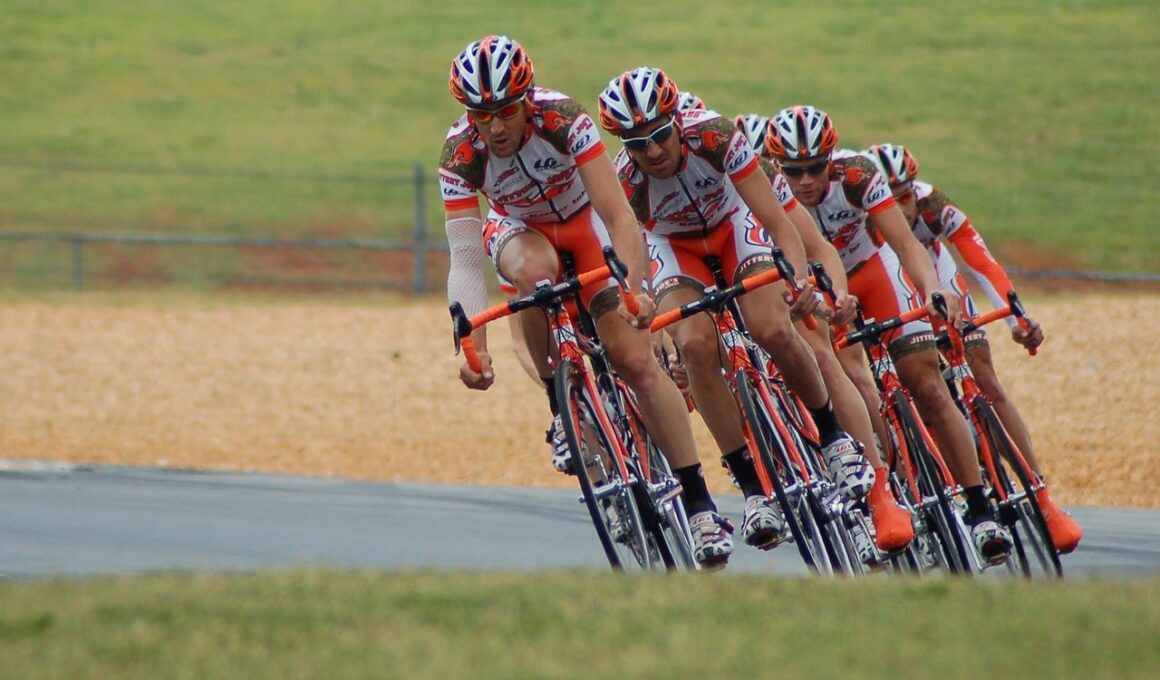The Basics of Biofeedback for Athletes
Biofeedback is a potent tool that promotes a strong mind-body connection, especially for athletes. In its essence, biofeedback refers to the process of using visual or auditory signals to help individuals become aware of their physiological states. Athletes can use this awareness to enhance performance, reduce anxiety, or recover after training. Common forms of biofeedback include heart rate variability training, muscle tension feedback, and skin temperature monitors. These techniques help athletes visualize their physiological responses, making it possible to control them through focused attention and practice. The rise of technology has made these tools increasingly accessible, fostering a greater understanding of how the mind influences physical performance. The ultimate goal is to transform this awareness into control, allowing athletes to optimize their training and improve competition performance through better relaxation and concentration. Furthermore, biofeedback can address specific issues like performance anxiety or stress management, which can significantly impact an athlete’s ability to perform under pressure. It’s vital for athletes to seek guidance from trained professionals to maximize the benefits of biofeedback effectively, ensuring they can use these techniques safely and efficiently to improve outcomes.
To facilitate the use of biofeedback effectively, athletes must first familiarize themselves with the various biofeedback methods available. These methods vary widely and can include measurements related to physiological functions such as heart rate, skin temperature, and muscle tension. Athletes can track and interpret these bodily signals through specialized equipment, relying on real-time feedback during practice sessions. For instance, a heart rate monitor can indicate when an athlete is overtraining or nearing their optimal performance zone. By understanding these physiological cues, athletes can make practical adjustments in their training regimen, thus enhancing efficiency. Additionally, biofeedback helps in attaining a state of mental relaxation, which is essential for peak performance. Techniques such as guided imagery or deep breathing, when practiced alongside physiological feedback, can improve focus and composure during competitions. Integrating biofeedback into mental training allows for a more holistic approach, combining physical and psychological readiness. Athletes experience how interconnected their minds and bodies are during these exercises, leading to improved outcomes. As biofeedback continues to evolve, its importance in athletic performance grows, reminding athletes that mindset is critical in achieving their goals.
Research surrounding biofeedback for athletes has proven its efficacy in numerous studies, reflecting its growing significance in sports science. For example, studies demonstrate improved performance and decreased levels of stress among athletes using biofeedback methods. These findings highlight biofeedback’s potential to enhance athletic performance through error reduction and refining skill sets. By providing tangible feedback about physiological conditions, athletes can obtain significant insights regarding their training methods. Moreover, biofeedback techniques are beneficial not just during the training phase but also apply when preparing for competition. Athletes can establish a more profound awareness and control over their states, facilitating consistent performance under varying environmental conditions. Research suggests that athletes can gain mental resilience through practicing biofeedback techniques regularly, leading to improved competition readiness. Better performance means more satisfaction, ultimately enhancing their overall sporting experience and longevity in their careers. Such advantages reinforce the importance of including biofeedback in athletic training programs designed for professional and amateur athletes alike. Comprehensive programs focusing on integrating biofeedback can create an elite training regimen, forming a crucial aspect of modern sports training.
While biofeedback presents significant benefits, athletes must approach its use with realistic expectations. Integrating biofeedback into training requires time and effort to yield discernible results effectively. Athletes should view biofeedback as a supplementary tool rather than a guaranteed solution to performance issues. It is crucial to combine these techniques with conventional training methods and mental conditioning to achieve optimal results. Additionally, working with a qualified biofeedback practitioner can facilitate a more effective learning curve, ensuring that techniques are applied correctly, maximizing their benefits. As with any sport-related skill, consistency plays a vital role in translating biofeedback practices into improved performance outcomes. Athletes must maintain a commitment to practicing biofeedback regularly, as this will encourage gradual progress and development. Real-world applications often expose variability in results; therefore, patience and persistence are key attributes athletes should embody during their biofeedback journey. By maintaining an open mind and a positive attitude, athletes can cultivate their resilience and enhance their ability to cope with performance-related stress, providing more rewarding athletic experiences. Thus, a balanced approach involving biofeedback can lead athletes down a path of success in their desired sports.
Practical Applications of Biofeedback
To implement biofeedback effectively, athletes should explore various strategies tailored to their individual needs and sports disciplines. For example, team sports might benefit from using heart rate monitors to analyze team dynamics and individual performance patterns. Conversely, individual athletes may emphasize muscle tension feedback or skin temperature monitoring to gain deeper insights into stress management and relaxation techniques. Developing personalized biofeedback plans can significantly enhance training effectiveness and competition results. Athletes ought to begin by identifying their goals and the specific areas they wish to improve. For instance, individual sports like tennis may require heightened concentration during matches, making techniques such as progressive muscle relaxation particularly beneficial. Understanding and managing the physiological reactions to pressure can lead to improved performance in high-stakes scenarios. Furthermore, integrating visualizations alongside these techniques accelerates the learning process, enabling athletes to solidify their ability to remain calm and composed during competitions. The practical applications of biofeedback are wide-ranging, showcasing its adaptability to various sporting contexts. Continuous assessment and reassessment of progress will further enhance the effectiveness of biofeedback, allowing athletes to refine their methods accordingly.
Combining biofeedback with sports psychology principles can deepen the impact athletes feel on their performance. This integration fosters a comprehensive understanding of how mental processes influence physical ones. Athletes trained in relaxation techniques, such as mindfulness meditation, can gain better control over their physiological responses, particularly in high-pressure situations. Mindfulness helps create stronger awareness of thoughts, emotions, and physiological sensations, leading to improved mental clarity. When athletes engage in mindfulness practices while employing biofeedback techniques, they often experience enhanced emotional regulation, reduced anxiety levels, and increased confidence during competitions. This synergy between biofeedback and sports psychology sets the stage for lasting improvements in an athlete’s performance trajectory. As athletes learn to employ strategies that target both mind and body, they often report heightened levels of satisfaction and enjoyment during their athletic endeavors. These factors contribute significantly to overall well-being and athletic longevity. As such, encouraging athletes to embrace this dual approach maximizes their potential and prepares them for both immediate and long-term success. Athletic training must evolve with these learnings to ensure athletes possess the tools needed to succeed in an increasingly competitive field.
Future Trends in Biofeedback
The future of biofeedback for athletes appears promising, with advancements in technology paving the way for innovative applications. Wearable devices capable of tracking multiple physiological markers provide real-time insights, giving athletes immediate feedback on their performance. As these technologies evolve, we can anticipate the integration of artificial intelligence systems that will analyze data from these devices, offering tailored recommendations. Athletes will benefit from customized training routines designed to push their limits while ensuring optimal recovery periods. Moreover, the rising popularity of virtual and augmented reality simulations will allow athletes to practice specific scenarios by utilizing biofeedback. Such immersive training experiences will empower athletes to hone their skills while developing effective coping mechanisms for stress management. Additionally, as sports continue to gain attention worldwide, research surrounding biofeedback will expand, deepening our understanding of the mind-body connection. Establishing the credibility and effectiveness of biofeedback programs will be paramount for both amateur and professional athletes. As practitioners tap into interdisciplinary approaches incorporating psychology, physiology, and technology, we can expect the landscape of athletic training to undergo remarkable transformations that redefine our understanding of peak performance.
In summary, biofeedback represents an innovative and effective method for athletes seeking to enhance their performance through improved mind-body connections. Athletes equipped with the right knowledge, tools, and guidance can harness these techniques to achieve outstanding results and build resilience in the face of adversity. Taking the time to explore biofeedback, combined with traditional training methods and psychological practices, creates an environment that cultivates success. Individual athletes, across various sports disciplines, can benefit significantly from understanding how their physiological signals tie directly to performance outcomes. Regular practice will lead to deeper awareness of one’s body and mind, better equipping athletes for challenges and competitions. As we forge ahead, supporting this shift towards a more holistic approach can enrich the overall sporting experience for athletes at all levels. The journey toward optimal performance becomes an integrated effort, blending physical training with mental conditioning. Acknowledging how the mind influences the body’s capabilities proves essential for achieving greatness in sports. Through continued evolution and research in biofeedback applications, aspiring athletes will find new pathways to maximize their potential, ultimately redefining the limits of athletic performance.


